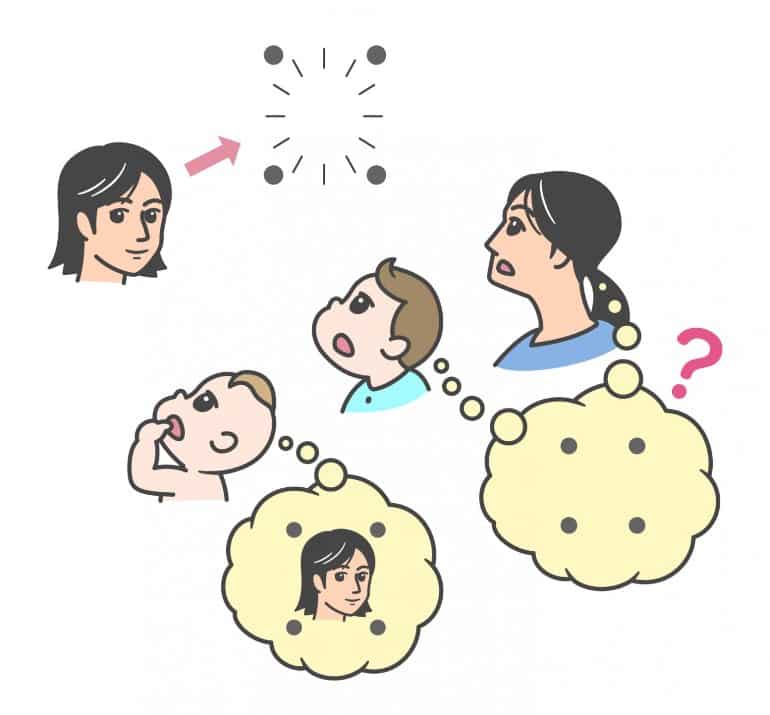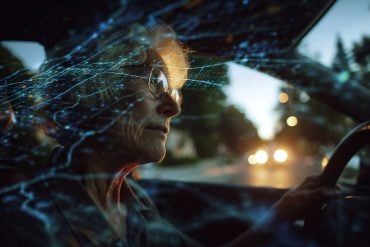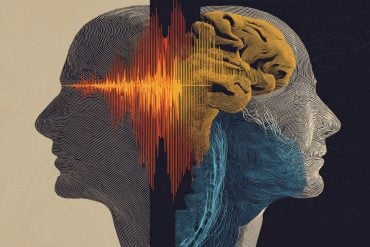Summary: Study reveals very young infants can perceive objects that older infants, children, and adults can not see due to a phenomenon called visual backward masking.
Source: Chuo University
We can generally recognize an object, even if it is presented for a very brief time. However, if another object appears immediately following the first object, the perception on the first object is impaired such that we do not notice its existence.
This perceptual phenomenon, called “visual backward masking,” is used in vision science to study how visual perception is processed in the brain. Interestingly, this phenomenon occurs even if the second object does not spatially overlap the first object, such as a contour or four dots surrounding the object.
The occurrence of this phenomenon is assumed to be due to a disruption of “feedback processing.” When we see something, visual information is serially processed from lower to higher visual areas in the brain in a bottom-up manner. However, top-down feedback processing, in which visual signals are sent back from higher to lower areas, also plays a critical role in visual perception. Visual backward masking is thought to occur owing to interference with feedback processing.
“We applied backward masking to infants aged 3-8 months to examine the development of feedback processing,” says Yusuke Nakashima, a postdoctoral fellow at Chuo University in Tokyo and the study’s lead author. “Recent studies in vision science revealed the importance of feedback processing in visual perception, but its development is poorly understood.”
To test whether backward masking occurs in infants, the researchers presented images of faces on a computer screen and measured the length of time that infants spent looking at them. As infants tend to look longer at faces, researchers can test whether infants perceive faces by measuring their looking time.
The faces were presented in two ways. In one condition, a face was followed by a mask image, in which infants would not see the face if backward masking occurred. In another condition, nothing appeared after the face; thus, infants would be able to see the face.
The researchers found that infants aged 7-8 months could not see faces followed by the mask, indicating that backward masking occurred, similar to adults. In contrast, infants aged 3-6 months could perceive faces even when the faces were followed by the mask image, indicating that masking did not occur and that younger infants could see faces that older infants could not.
“These results suggest that feedback processing is immature in infants younger than 7 months,” says Nakashima. “That is, younger infants do not have feedback processing that backward masking should interfere, and thus, masking is ineffective for them.”

The results of the study demonstrated that the mechanisms for visual perception change drastically in the second half of the first year of life, from the bottom-up system to the system incorporating top-down processing.
The results also showed that objects that can be perceived in early infancy become imperceptible during development. “This might seem counterintuitive,” says Masami Yamaguchi, a professor at Chuo University. “Instead, important visual abilities would be acquired by the maturation of feedback processing.”
For example, feedback processing is essential for robustly perceiving ambiguous visual images, such as occluded objects. “Younger infants whose feedback processing is immature might perceive the external world ambiguously,” says Yamaguchi. “In return for susceptibility to visual masking, we acquire the ability to robustly perceive ambiguous visual scenes.”
About this visual neuroscience research news
Source: Chuo University
Contact: Yusuke Nakashima – Chuo University
Image: The image is credited to Chuo University, LAIMAN
Original Research: Open access.
“Perception of invisible masked objects in early infancy” by Yusuke Nakashima, So Kanazawa, and Masami K. Yamaguchi. PNAS
Abstract
Perception of invisible masked objects in early infancy
Recurrent loops in the visual cortex play a critical role in visual perception, which is likely not mediated by purely feed-forward pathways. However, the development of recurrent loops is poorly understood.
The role of recurrent processing has been studied using visual backward masking, a perceptual phenomenon in which a visual stimulus is rendered invisible by a following mask, possibly because of the disruption of recurrent processing.
Anatomical studies have reported that recurrent pathways are immature in early infancy. This raises the possibility that younger infants process visual information mainly in a feed-forward manner, and thus, they might be able to perceive visual stimuli that adults cannot see because of backward masking.
Here, we show that infants under 7 mo of age are immune to visual backward masking and that masked stimuli remain visible to younger infants while older infants cannot perceive them. These results suggest that recurrent processing is immature in infants under 7 mo and that they are able to perceive objects even without recurrent processing.
Our findings indicate that the algorithm for visual perception drastically changes in the second half of the first year of life.







